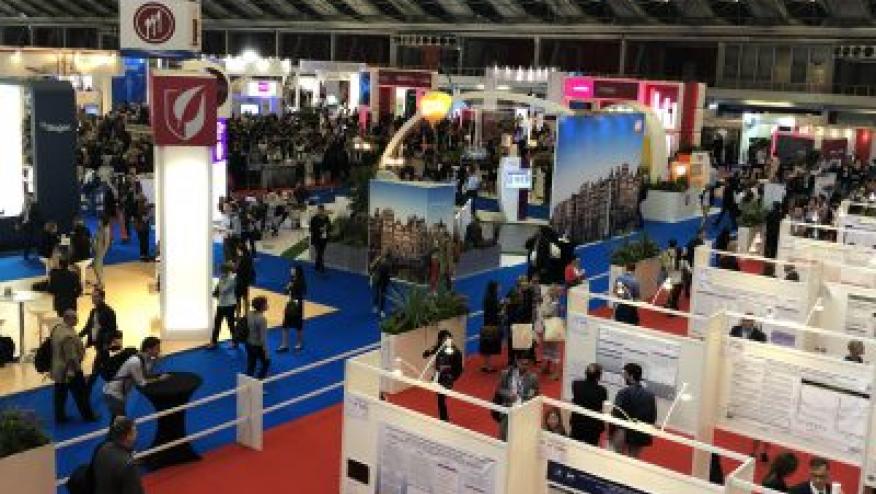EULAR 2023 – Day 4 Report Save

Day 4 was a half day closeout to the EULAR 2023 Congress. For me the big presentations were the late breaking abstracts, although there were other review and abstract sessions for those remaining. Many people missed the last day (June 3rd) of the meeting as a pending Milan airport strike on June 4th dictated last-minute changes to travel and learning. Here are a few of my favorite abstracts from the Late Breaker Session.
- JAK/TYK Inhibitor: Too Good to be True? LB0001 was a Head-to-Head comparison of TLL-018 (a highly selective dual JAK1/TYK2 inhibitor) and tofacitinib in active rheumatoid arthritis (RA) patients. This study was novel in that it enrolled 101 difficult to treat (failing ≥2 targeted therapies) RA patients and looked for an ACR50 response after 12 weeks of treatment. Patients received either tofacitinib (TOFA) 5 mg bid or one of 3 doses of twice-daily oral TLL-018 (10mg, 20mg, or 30mg). Half the patients had already received prior bDMARDs and ~30% had prior JAK inhibitors.
- At week 12, the ACR50 response rates were:
- TLL-018 10mg = 48.0%
- TLL-018 20mg = 65.4% (p<0.05 vs TOFA)
- TLL-018 30mg = 72.0% (p<0.05 vs TOFA)
- TOFA 5 mg = 41.7%
- Remission (DAS28-CRP<2.6) rates at week 12:
- TLL-018 10mg = 39.1%
- TLL-018 20mg = 34.8%
- TLL-018 30mg = 54.5%
- TOFA 5 mg = 17.4%
Drugs were well tolerated with adverse events as expected and specifically no deaths, venous thromboembolism or major adverse cardiovascular event were seen. The magnitude of response was unexpected and unexplained and needs repeated study and confirmation to assert that dual inhibition of JAK1 and TYK2 yields advantages not yet seen in clinical trials.
- Two Studies of SEL-212 in Gout. LB0002 was presented by Dr. Herb Baraf and delivered the top line, preliminary results of 2 studies of SEL-212 in patients with refractory, tophaceous gout (who previously failed other gout therapies and still had hyperuricemia). SEL-212 involves 2 infusions; first a pretreatment infusion of tolerogenic nanoparticles containing rapamycin (SEL-110; to limit anti-drugs antibodies) followed by IV pegadricase (SEL-037), that is quite immunogenic when used alone, but much less so when given after rapamycin nanoparticles. Two studies were reported on, the DISSOLVE I (USA study) and DISSOLVE II (worldwide and USA) studies that had a primary endpoint of lowering the serum uric acid to below 6.0 mg for >80% of the time on treatment. A total of 265 Refractory gout (> 3 gouty attacks/year or ≥ 1 tophus) patients were treated either with placebo or two doses of SEL-212 given every month for 6 months. Significantly better responses were seen in the SEL-212 patients, more so for the US DISSOLVE I study (56% and 48% vs 4 % placebo) than with the worldwide DISSOLVE II study (46% and 40% vs 11% placebo). in the low-dose groups for D1 and D2, respectively (p ≤ 0.0044 vs placebo). Both study groups were balanced at entry. During the study, infusion reactions were seen in 3.4% and 4.5%, Gout flares in about 44% (equally) and serious adverse events were seen in 6.9%, 14.8% and 2.2 % of those on high dose, low-dose and placebo, respectively. There were only 4 reports of anaphylaxis. These results appear comparable to that seen with pegloticase but has the advantage of using tolerizing rapamycin before the pegadricase infusion (thus no further need for added immunosuppression as seen with methotrexate use in the pegloticase MIRROR study).









If you are a health practitioner, you may Login/Register to comment.
Due to the nature of these comment forums, only health practitioners are allowed to comment at this time.